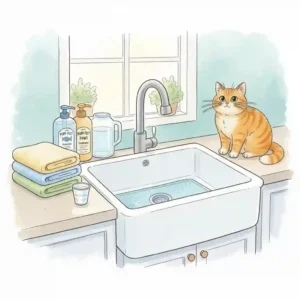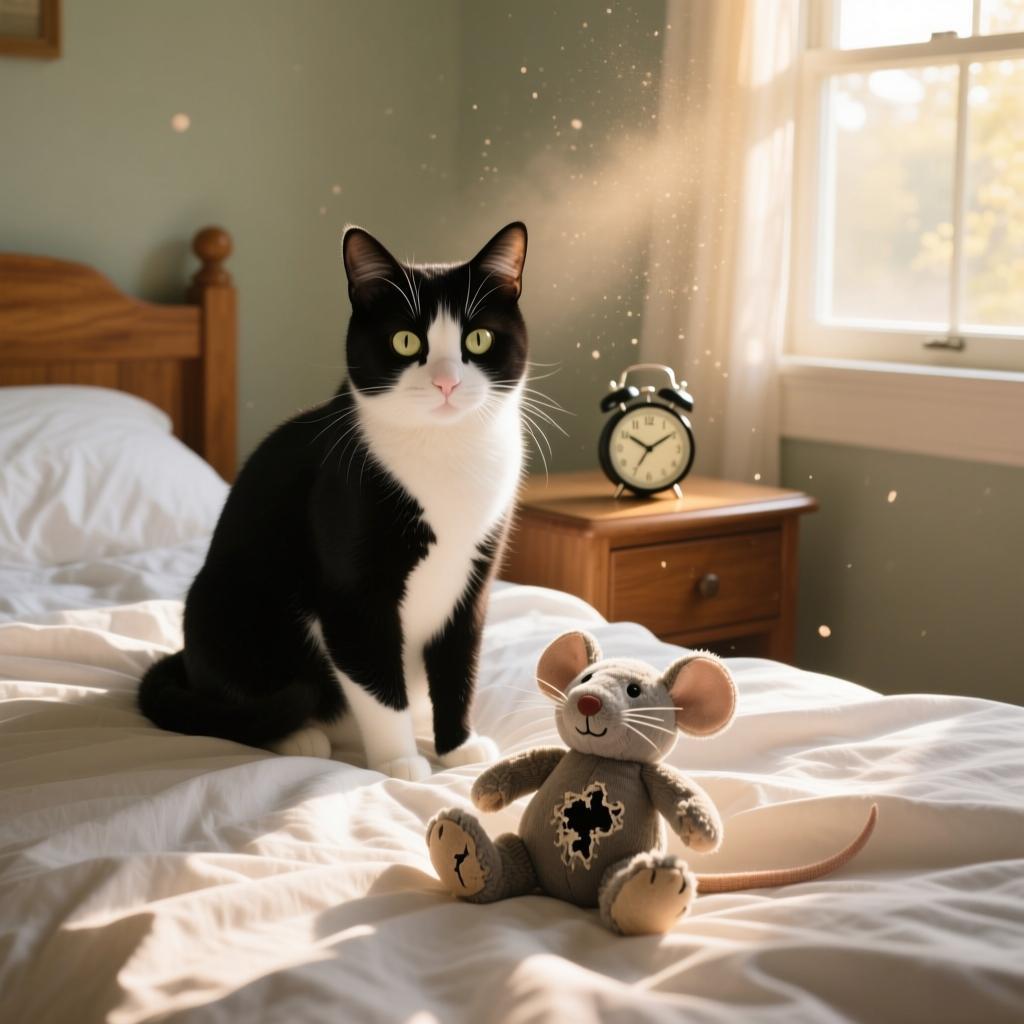The Golden Rule: Bathing is a Last Resort
First, let’s be clear: most cats are superb self-cleaners and rarely need baths. However, situations like encountering sticky substances, medical conditions, or extreme dirt make bathing necessary. The goal isn’t to win a fight; it’s to complete a necessary task with as much calm and efficiency as possible. This guide is designed to help pet owners from the United States to Australia navigate this challenging but manageable chore.
Phase 1: The Crucial Preparation – Setting the Stage for Success
90% of a successful bath happens before a single drop of water is used.
-
Gather Your Supplies: Have everything within arm’s reach in the bathing area.
-
Cat-Specific Shampoo: Human or dog shampoo can irritate feline skin. Use only a vet-recommended, pH-balanced cat shampoo.
-
Non-Slip Mat: Place this in the sink or tub to give your cat secure footing and reduce panic.
-
Jugs or a Handheld Sprayer: For rinsing. Pre-fill jugs with warm water so you don’t need to run a noisy tap.
-
Large Towels: Have at least two ready for drying.
-
High-Value Treats: These are your most powerful tool for creating positive associations.
-
-
Pre-Bath Grooming & Trimming: Gently brush your cat to remove any loose fur and mats. For long-haired cats, this is especially important.
-
The Calm Before the Storm: Choose a quiet time of day when your cat is typically relaxed. Play with them beforehand to expend a little energy. Stay calm yourself—your cat will pick up on your energy.
Phase 2: The Step-by-Step Bathing Process
Move with purpose and confidence. Slow, hesitant movements can increase anxiety.
-
The Warm Welcome: Fill your sink or basin with a few inches of warm (not hot) water. It should feel lukewarm on your wrist. Gently place your cat on the non-slip mat, speaking to them in a soothing voice.
-
The Gentle Soak: Using your jug or sprayer on a gentle setting, slowly wet your cat’s body from the neck down. Avoid the head, face, and ears entirely. Let them get used to the sensation.
-
Lather and Lift: Apply a small amount of shampoo and lather it gently over their body. Be a “massage therapist,” not a “scrubber.” Lift, don’t push, to work the lather down to the skin.
-
The Critical Rinse: This is the most important step. Leftover shampoo can cause skin irritation. Rinse thoroughly until the water runs completely clear. Again, keep water away from the head.
-
The Face “Bath”: Never pour water on your cat’s head. Instead, use a well-wrung washcloth dampened with clear water to gently wipe their face and around their ears.

Phase 3: The Dry Down – Patience is a Virtue
Most cats hate the sound and sensation of hair dryers. Your best tool is a highly absorbent towel.
-
Towel Dry Gently: Lift your cat from the water and wrap them immediately in a warm, dry towel. Blot and squeeze (don’t rub) their fur to absorb as much water as possible. You may need a second or third towel.
-
Create a Warm Retreat: Place your cat in a warm, draft-free room with another dry towel on the floor. They will instinctively groom themselves to finish the drying process. Ensure they cannot access cold outdoor areas until fully dry.
What If My Cat Is Truly Terrified?
For some cats, a full bath is too overwhelming. Here are your options:
-
The “Spot Bath”: If only a small area is dirty, just wash that spot instead of a full-body bath.
-
Waterless Cat Shampoo: In some cases, a foam or mousse shampoo that can be toweled off is a fantastic low-stress alternative.
-
Seek Professional Help: If the experience is traumatic for both of you, there is no shame in consulting a professional cat groomer. Their expertise can be worth its weight in gold.
Conclusion: You’ve Got This!
By preparing thoroughly, moving with calm confidence, and rewarding your cat throughout, you can transform bath time from a dreaded ordeal into a manageable task. Remember, your composure is the key to your cat’s composure.



